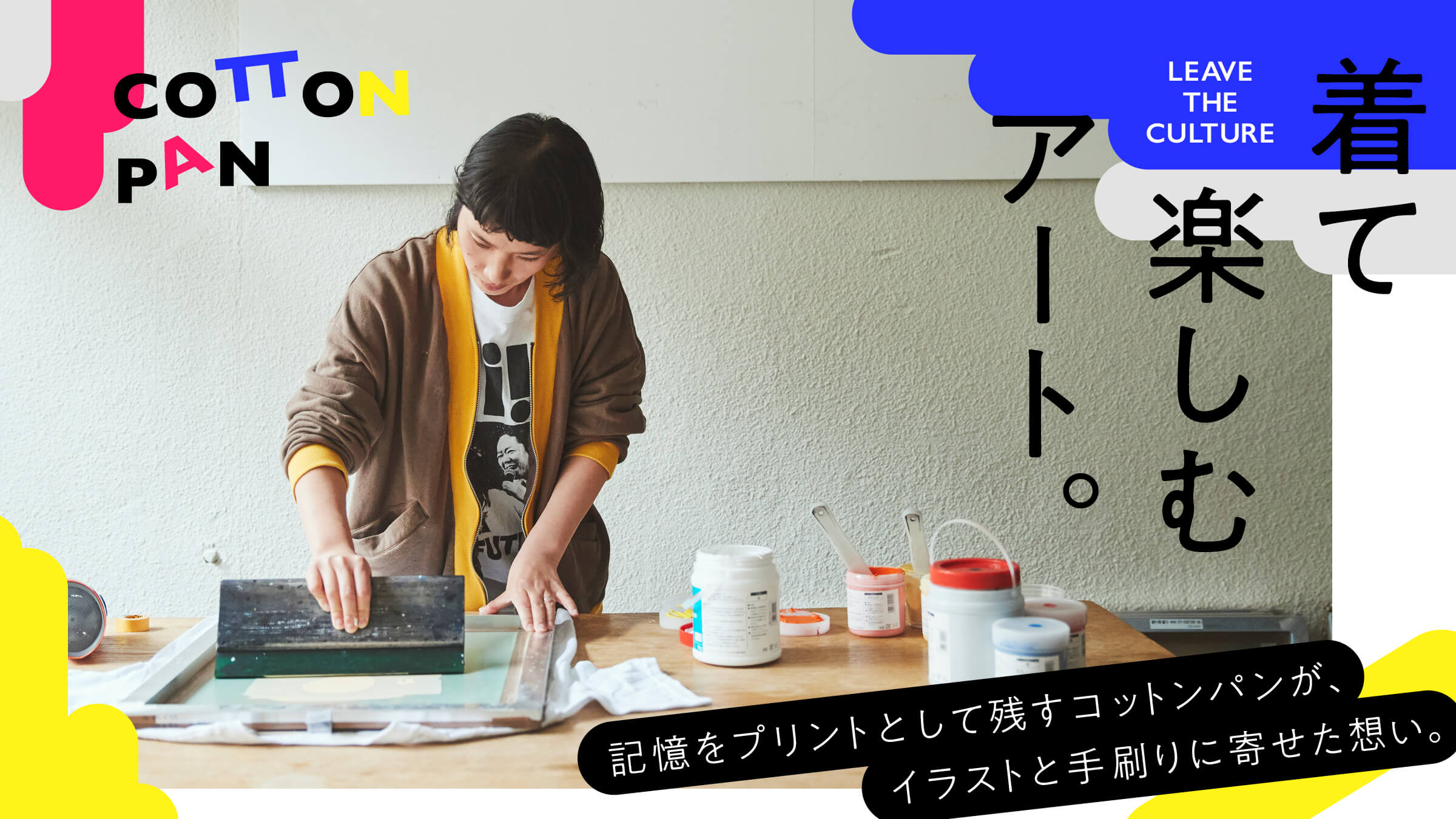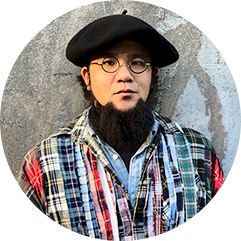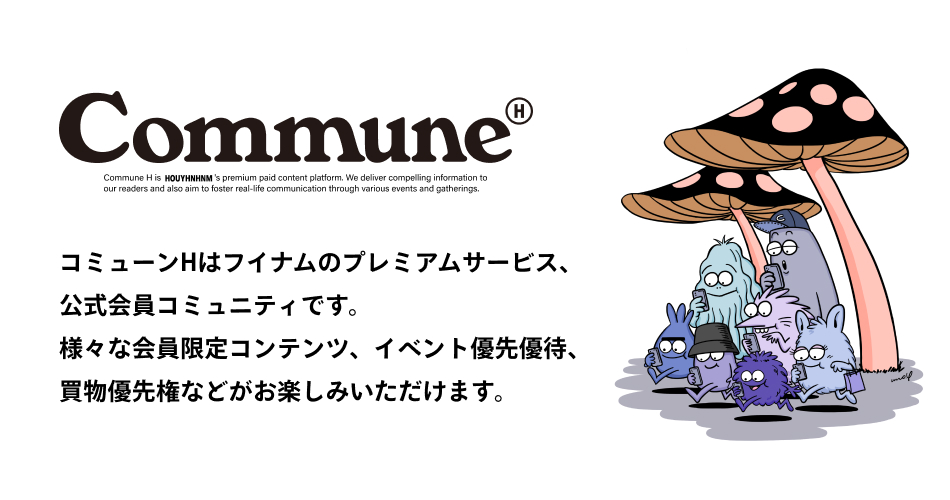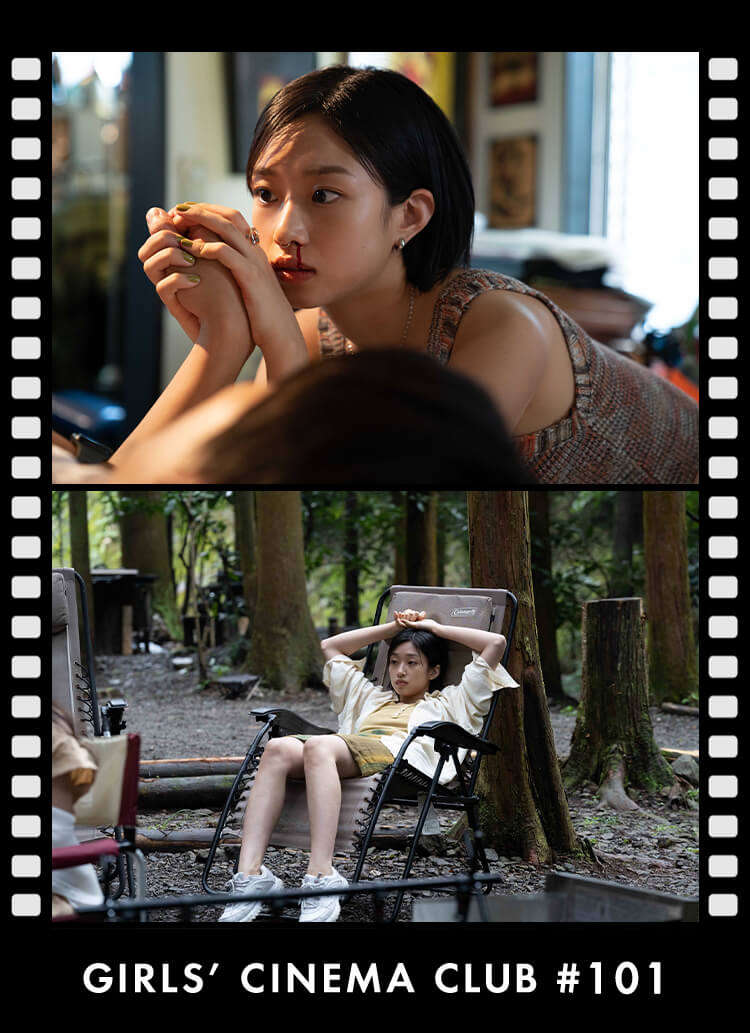PROFILE
COTTON PAN" is an apparel brand designed by his wife, Hikari Watanabe, an illustrator, and directed by her husband, Koji Watanabe, who runs the vintage clothing store "DANJIL" in Machida. The brand is characterized by its charm, looseness, and sense of looseness, and all of its creations project a culture that needs to be preserved. He also prints his illustrations on silk screen prints in multiple colors and tones with great attention to detail, and aspires to create clothing that stimulates the five senses.
cottonpan.net
The influence of the printing process, the individual prints, and the color of the body. Such "coincidences are all inevitable".



HOUYHNHNM's has often introduced "Cottonpants," but I think many of our readers recognize it as a "mysterious brand. I would like to start by asking you to tell us how the brand was born.
Koji Watanabe ("Koji"):It all started when the director of "gourmet jeans," who happened to know that Hikari, the designer, was drawing pictures, suggested, "Why don't you produce T-shirts? I was very interested in this idea. At the time, however, we had not even decided on a brand name (laughs).
When did you start painting?
Hikari Watanabe (hereafter, Hikari):. Painting has always been a hobby of mine. Originally, I graduated from the textile department of an art college and worked as a colorist and printer at a factory that made printed fabrics for apparel brands. I had a vague idea at the time that I wanted to do something on my own someday, and I thought, "Well, let's give it a try.
Why did you choose silkscreen printing as a method of artistic expression?
Hikari:I like silkscreening in the first place. I always draw pictures on a tablet, but I like the displacement and the unique handcrafted texture that comes from expressing digitally drawn pictures by the analog method of hand printing.

The core of "Cotton Pants" is the artwork drawn by Ms. Hikari. The deformation of the figures and backgrounds is a characteristic of your artwork, which is expressed with only colors and no outlines. Could you tell us about your commitment to this?
Hikari:Subconsciously, I try not to include small details such as people's faces, but I am conscious of making the main figures stand out more than the background.
. Still, the reason why the original "Oh, that's the one" comes to mind is probably because of your skillful selection of details.
Hikari:Thank you . As for the colors, if I picked up everything from the original material, the number of silkscreen plates would be huge, so I try to pick up and keep the most memorable colors on the screen.



You showed us the actual printing process, and for that design (*a horror movie from the 80s in which the soul of a serial killer takes over a child's doll and goes berserk), you used 6 plates.
Koji:So that's about the average these days. Even when it's less, it's like 2 editions.
. If they are printed by hand, it must be difficult to mass produce them.
Hikari:Since I have a child, I have limited time to work on it , so I average 10 sheets a day. I do my best to print about 20 sheets a day. . I print at my own pace every day.
Do you work in a studio-like space?
Hikari:I usually work in the living room of my house. At night, after putting the kids to bed, I sneak away (laughs).

The colors in all the designs are so vibrant!
Hikari:Sometimes I use the ink as it is, but basically I mix my own colors each time I use it in order to get the image I want.
Do you keep the color mixing recipe as data?
Hikari:No. (Laughter)
Koji:. So, I check the blurring and control the quality.
Hikari:I leave most of the work to them. At my former workplace, I used to keep the color mixing data, but since I was doing it myself, I was a little lenient on that part (laughs).

. But there is another way of looking at it, and that is that individual differences are also "unique" and interesting.
Hikari:. In fact, there are times when the printing is a little off (laughs). (Laughs) Also, the color of the T-shirt's body also affects the print since it is hand-printed. If the color is darker, such as black, the print will come out a bit shallow, but I think this is only possible with hand printing, so I always try to express artistry while making the most of it.
Koji:A male artist would have too much power and the plate would collapse, or the ink would be smeared all over the plate, but a female artist is not so powerful, so the balance is just right. Even that kind of blurring is an art form, or an art form that is unique.
Hikari:To put it nicely, "coincidences are all inevitable.
The graphics themselves are subtractive, but the silkscreen prints are additive. And because the answer you derive from this process is different each time, each piece is a one-of-a-kind work of art, rather than a mass-produced product. Do you remember how many materials you have used so far?
Hikari:We have around 10 models every season....
Koji:. on an annual basis, that's about 20-50 models.


Do you have any requests or orders for Hikari from Koji?
Koji:No, I don't. I'm a fan of her work myself. I myself am a fan of her work, so when I see the finished product, I am always excited. I get so excited when I see the finished product (laughs). Well, if I had to point out a problem, it would be that she doesn't clean up the tools she uses. In the past, there was even a case where a squeegee was in the washing machine.
Hikari:You were drying it on top of the washing machine and it just fell out and got in there by accident (giggles).
. It's exactly like a home industry.
Koji:Yes, I thought it would be great to have an environment where we could make things together and show them to our children. That's how I got involved. Until then, I had always thought that vintage clothing stores were the strongest, and there was a part of me that thought, "This is a tribute after all! But I thought her work was not a homage, but more like pop art, and I liked that she was joking around in a good way.









